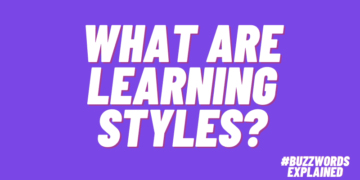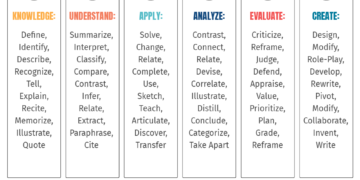How Can Video-Based Practice And Coaching Transform Your Business?
In recent years, HR departments have leaned into coaching and mentoring to support employees in achieving their maximum potential. And with organizational processes moving to digital environments, mentoring relies more and more on technology. Most recently, video-based practice has risen in popularity, as humans have the ability to process videos thousands of times faster than text, making it an extremely efficient training method. In this article, we explore the definition of video-based coaching, its benefits, and the innovative ways it can be used to maximize productivity and drive better employee performance.
What Is Video-Based Learning?
Video-based learning refers to any learning experience facilitated through auditory and visual stimuli or, in a word, videos. By enriching the visual experience with animation, graphics, text, and audio, videos manage to create learning experiences that are significantly more engaging than most. As a result, videos are becoming an integral part of online training. Some examples are explainer videos that either present simplified versions of complex subjects (frequently with animation) or imitate one-to-one training sessions with the help of experts. Most recently, interactive videos have made an appearance, further boosting learner engagement.
What Are The Benefits Of Video-Based Practice?
Now that we know what video-based learning means, let’s take a look at the benefits it brings to the world of online training.
1. Employee Engagement
Comparing traditional text-based learning to video-based practice is truly an unfair match. Where one is monotonous and dry, the other is fast-paced and innovative. Using graphics, animation, and short clips, videos can make any subject interesting and understandable. This multisensory experience keeps learners engaged until the end of the video. In addition, videos allow instructors to leverage the microlearning strategy by being short enough to watch whenever you have a few minutes of free time.
2. Knowledge Retention
Speaking about engagement, it only makes sense that when the training material is able to catch and hold the learner’s attention, it’s also going to be more memorable. In fact, studies have shown that learners are much more likely to remember a piece of information when presented in visual form. Videos have the added benefit of combining visual with auditory content, which further increases memory retention. As a result, knowledge gaps are addressed more effectively, making employees more productive in less time.
3. Knowledge Accessibility
Employees are incorporating more devices in their workplace arsenals, such as smartphones and tablets. Therefore, online training methods must follow suit. Fortunately, video-based practice is more than capable of operating on smaller screens. This means that learners can access the platform whether they are at home, on the train, or even abroad. All they need is an internet connection. Taking this a step further, employees will always be able to answer a client’s question or solve an on-the-job issue, as they will have a library of information in the palm of their hand.
4. Cost-Effectiveness
Video-based learning can make quite a difference in your bottom line compared to traditional training methods. Without a need for a trainer or traveling and accommodation costs, videos can significantly decrease your training budget. Although creating training material in video form might seem daunting, it can be very beneficial in the long run. Clips are recorded once, and you can share them throughout your organization in seconds to ensure that everyone gets the same quality of training. Also, updating content will be a faster and less complicated process.
4 Innovative Uses Of Video-Based Practice
Videos can change the way we practice new skills and coach employees. Let’s explore 4 innovative uses of video in online training.
1. Practicing New Skills
As they say, practice makes perfect. It helps you finetune your performance and achieve the best results. Video-based practice and coaching platforms, such as Rehearsal, transform skill development by assigning learners video-based prompts or scenarios. These require learners to give a product demonstration, a presentation, or even exhibit a specific soft skill, such as empathy. Learners respond to these prompts by recording themselves, which gives them the ability to judge their performance and try as many times as they need to nail it.
2. Mentoring And Providing Feedback
Although learners can practice on their own, it’s important to note that video-based training platforms can also be valuable coaching tools. Using a video-based practice and coaching platform, learners can send their videos to their mentors, supervisors, or instructors and receive immediate feedback in the form of time-based comments, grades, or even videos. This allows for quick communication between employees and their mentors, and most importantly, private and personalized feedback that makes a difference in employee performance. Or, in the case of Rehearsal, learners can be evaluated by keyword recognition, eye contact, and voice cadence using artificial intelligence.
3. AI-Guided Learning
If you’re taking a self-directed training course and there is no mentor to evaluate your videos, Artificial Intelligence (AI) can be just as valuable. All learners have to do is configure their assignments by setting target behaviors and/or keywords they must mention. Then, they record themselves, and the software determines if their response meets the predetermined criteria.
4. Practice Videos For Collaborative Learning
Being able to learn in a collaborative environment where you can share experiences and insights makes a great difference in the quality of training. It also promotes organic collaboration and effective teamwork within your organization. Therefore, advanced video-based platforms have created spaces, much like Rehearsal’s channels, where learners can publicly share videos, ask questions, and comment on other people’s videos. In this common hub, learners are able to get more feedback on their performance, pick up helpful tips they can incorporate into their elevator pitches, and then “pin” these videos to boards they can reference – similar to how people engage with social sites like Pinterest.
Conclusion
If there is one thing we can say with certainty, it’s that video-based practice is here to stay. Its benefits and innovative uses motivate learners, document progress, prove proficiency, and promote collaboration within your organization.
Helpful Links
If you are interested in the way this tool works, read these two real-life success stories that demonstrate some of the upsides of using Rehearsal in the workspace. Or view our demonstration, or request a custom demo.

Homebase
Make work easier. Running a small business has never been harder. Homebase helps with free tools to track time and manage your team.
Originally published at blog.elblearning.com.




















